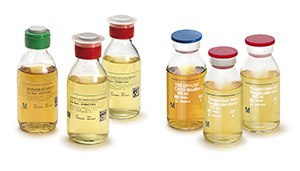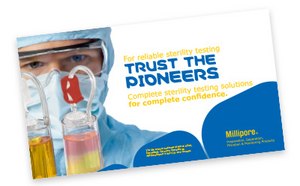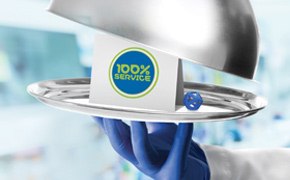Sterility Testing by Direct Inoculation
STERILITY TESTING BY DIRECT INOCULATION FOR NON-FILTERABLE SAMPLES

Reliable sterility testing and the development or validation of product-specific methods are critical steps in the drug development process. Although international pharmacopeias recommend using standard membrane filtration for sterility testing, certain products are not filterable or deformable. These products are normally tested using direct inoculation – using a range of sterility testing media including soybean casein digest medium (TSB), and Fluid Thioglycollate medium (FTM standard and clear). In this method, the test sample is directly inoculated into the required media, ensuring that the amount of sample is below 10% of the total media volume.
ADVANTAGES OF DIRECT INOCULATION
In the direct inoculation (immersion) method, the test articles are inoculated directly into tubes or bottles containing an appropriate medium and incubated for 14 days. To comply with the different direct inoculation methods for sterility testing requirements, we offer a wide range of customized sterility testing media in various volumes sizes and bottles (from 9 mL tubes up to 750 mL) to fit your applications.
The direct inoculation method:
- Provides a mode for sterility testing of materials that cannot be easily filtered.
- Consumes less product volume during the conduct of the bacteriostasis and fungistasis (B&F) testing.
CULTURE MEDIA FOR DIRECT INOCULATION
In the direct inoculation method, the sample is directly inoculated into two types of media. One medium allows the growth of anaerobes, while the other medium supports the growth of aerobes. Fluid thioglycollate medium (FTM) is the commonly used medium for anaerobes, while tryptic soy broth (also called soybean casein digest medium) is more suitable for aerobes. The aerobic and anaerobic microorganisms are detected separately in the respective media at the end of the incubation period.
Soybean-Casein Digest Medium (Trypticase Soy Broth, TSB)
Soybean-Casein Digest medium is suitable for culturing fungi and aerobic bacteria. This medium is used for sterility testing by direct inoculation. It is also used as a pre-enrichment broth for nonsterile products.
Complete Sterility Testing Solutions for Complete Confidence
Discover our full sterility testing portfolio based on over 45 years of experience and expertise. Our large variety of devices and pumps, along with sterile culture media and rinsing fluids can help you to stay compliant, whether you use membrane filtration or direct inoculation methods. Reduce the sterility testing workload and focus on your critical lab activities thanks to our extended Steritest® services portfolio. The experienced application and validation engineers will assist in method development and validation implementation within the QC microbiology laboratory. They will also provide basic and advanced technical training on sterility testing, in person or remotely.
如要继续阅读,请登录或创建帐户。
暂无帐户?

